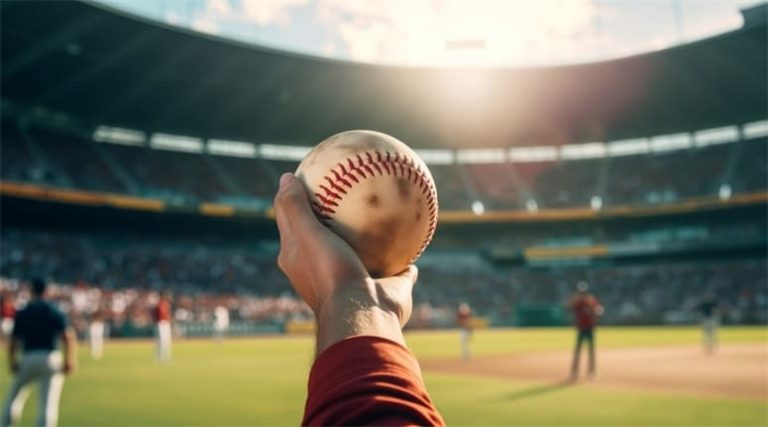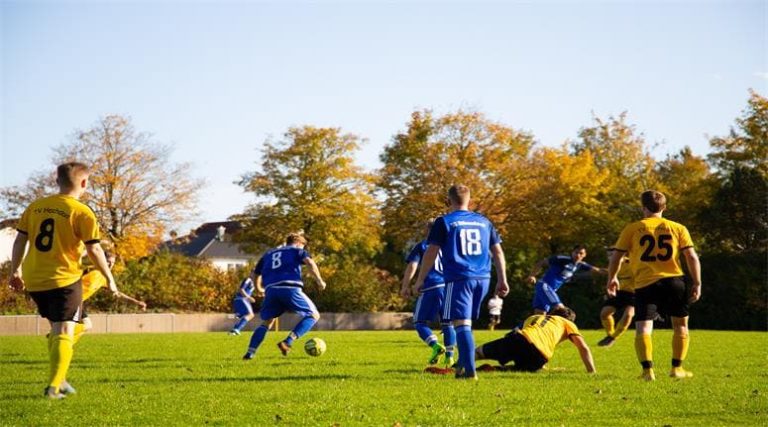How Long Do Tennis Games Last? What You Must Know
Tennis is unlike soccer due to its unpredictability in the length of its duration. With soccer, the set time limit of a match is 90 minutes (unless extra time comes into play). However, how long a tennis match is depends on various factors.
How Long Is a Tennis Match?
Some matches have been known to go for less than 30 minutes, yet others last for over two hours. So, exactly how long are tennis matches? This article has all the information you must know. To start, let’s explain some factors determining the length of a tennis match.
Surface of the Court
In Wimbledon, players play on grass, whereas the French Open features clay courts. The material that makes the surface of the tennis court determines characteristics such as speed and bounce.

- Grass
Grass tennis courts have been with us since the 16th century. Besides granting us a beautiful lush green scenery, it is easy to see why they are a favorite. They provide players with an even playing field, and their low bounce makes them the perfect choice for aggressive players. Due to how fast the ball moves on grass courts, a tennis match is likely to last shorter.
- Clay
Players who wind up on clay courts are likely to play for longer because of the high bounce and slow pace the surface offers. Despite the extra minutes spent on the court, a player might prefer clay courts because of how gentle they are on the wrists and joints, thereby reducing the possibility of injuries by 85%.
Still, there is a big difference between green and red clay courts, with red courts causing an even slower pace than green ones. Consequently, a tennis match will last longer on a red clay court than on a green clay court.
- Hard
These hard surfaces are made of asphalt and acrylic. Although they provide a uniform surface, their hardness can result in players injuring their joints if they fail to strike a balance between hitting the ball powerfully and tactfully. Hard surfaces offer a medium pace, meaning tennis matches are more likely to last shorter than those played on clay courts.
- Carpet
These are usually found indoors in tournaments where a quick turnaround is necessary. They offer the same bounce and pace as grass courts; thus, tennis matches will go on quite quickly. They are made from synthetic materials and are smooth, making them a headache whenever players need to change directions or make an abrupt stop. Carpet courts, however, favor aggressive players.

Weather
Once temperatures rise, the pressure in the tennis balls increases. This results in the ball bouncing much better, reducing the time spent on the court. Humid weather, on the other hand, affects the players since they feel hotter and start sweating. As a result, their bodies work extra hard to remain cool. The players get exhausted faster, and the tennis match lasts longer.
Rain or even light showers cause the surface to be wet, thereby decreasing the player’s ability to maneuver. Consequently, rallies tend to be longer in rainy weather, but if players change their style of play to volley more often, the length of the rallies dramatically decreases.
Match Format
So, how long do tennis matches last? There are different match formats, each varying in set numbers.
- Three-Set Matches
A best-of-three-set match averages 90 minutes, and if the game has a winner with two quick sets, it will last considerably shorter. However, if professionals play well and end up with three competitive close sets, the game will last for over two hours.
- Five-Set Matches
Assuming each set takes about 40 minutes, a best-of-five-set match can end after three, four, or five sets. For this reason, such matches are likely to last around two hours and can go longer than three hours. During the Australian Open in 2012, two reputable players – Rafael Nadal and Novak Djokovic – lasted for 5 hours and 53 minutes on the court.
On the other hand, doubles matches will last shorter, taking an average of an hour and 10 minutes. The main reason for doubles taking less time is that such tournaments speed up the game using the scoring method that includes tie-breakers and “no-ad.”
“No-ad” scoring means the first player to win four points is the winner. Usually, when this scoring method does not apply, winners are supposed to win by two points. Moreover, when playing doubles, two players can cover the ground faster than a single player, completing the game quicker.

Skills of the Players
A player who takes time to play a point and to serve will affect the pace of the play. The longer the time taken, the longer the duration of the tennis match.
Players who have been in the game for so long have acquired skills that make them hard to defeat. They have mastered the skill of endurance, causing them to remain focused in the heat of the game when their opponents’ energy levels are likely to decline. As a result, if two professional players are on the court, the tennis match will last longer, unlike when two amateurs are playing or when a professional competes against an amateur.
Additionally, some players are aggressive, while others are defensive. The latter are likely to cause the game to last longer as they spend more time thinking of being strategic. The former are willing to go for it no matter what, resulting in the match ending much sooner.
Still on the point of skillful play, how long does a tennis match last in college play? Of course, it will last longer since the college players are yet to become professionals. Besides lacking in endurance, they also have so much more to learn, including the different serves and strategies they can apply in various plays.

Conclusion
In 2010 at Wimbledon, John Isner beat Nicolas Mahut in a match that took 11 hours and 5 minutes. They went at each other during the first two days until it got too dark to see. On the third day, Isner won the final set despite exhaustion. The match remains the longest in the history of tennis.
The shortest match dates back to 1946 during the Surrey Open in England when J. Sandiford bowed to Jack Harper in defeat after only 18 minutes. Some believed the odds were all in favor of the game going on for as little time as possible – beginning with the grass court, followed by Harper’s undeniable prowess compared to his opponent. Finally, he only needed a best-of-three-sets. Harper was so much better than Sandiford that he only lost one point in the entire game.
Rudyard Kipling, in his poem “If,” urges us to fill every unforgiving minute with 60 seconds’ worth of distance running, and that is what every tennis match is essentially all about. It is not so much about the time players spend on the court but rather how well they utilize it.
A game could go on for 11 hours, and fans would still look forward to watching it till the end because they enjoy it. Players, on the other hand, are on the court to win no matter how long it takes. Therefore, the length of a tennis match, while depending on so many factors, eventually will only be determined by how fast a winner emerges.







